Choosing the Best Foil Board for Kiteboarding Beginners
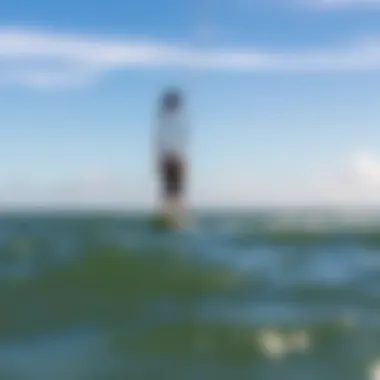
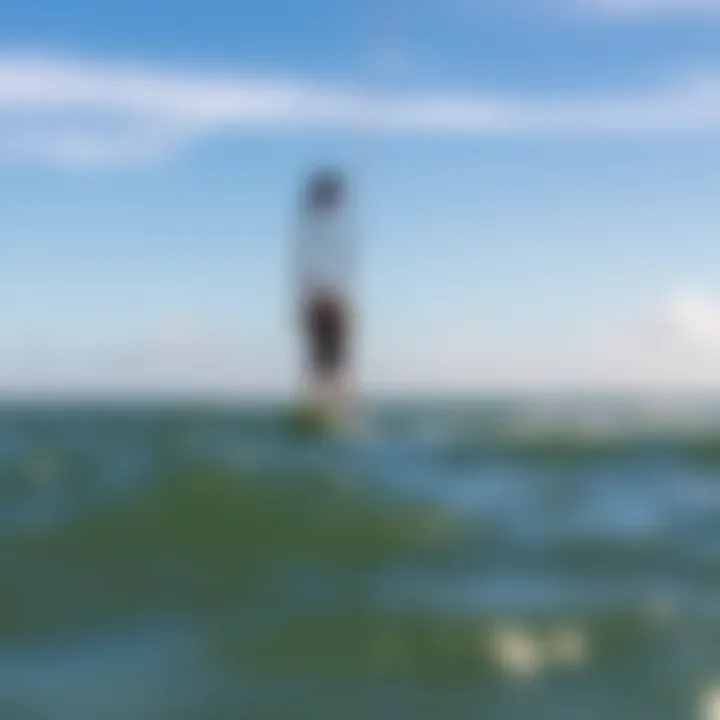
Intro
Embarking on the journey into kiteboarding is no small feat, particularly for beginners stepping onto a foil board for the first time. The world of kiteboarding can appear chaotic at first glance. Add in various board options, technical jargon, and an ocean that refuses to stand still, and it’s easy to feel overwhelmed. This article aims to demystify the process of choosing the right foil board for those just starting out. The goal is not merely to inform but to empower novice riders, equipping them with the knowledge to select a board that enhances their experience while minimizing the urge to dissolve into sheer confusion.
In the following sections, we will dive into essential factors like stability, buoyancy, and maneuverability; consider a spectrum of foil board types; and touch upon vital usage tips and maintenance that can prolong the life of your gear. In short, we’ll set the stage for a thrilling adventure on the water, ensuring that you’re better prepared to tackle those waves.
Gear Selection
Types of Kites
To start, let's decode the myriad of kite options available to beginners. Selecting a kite isn’t just about picking the shiniest one on display or the one that looks the coolest. Each kite has a unique design and functionality, making some more suitable for newcomers.
- Delta Kites: These have a wider shape, providing better stability and forgiving characteristics. They're excellent for learners who are still getting used to the mechanics of kiteboarding.
- C Kites: Known for their powerful lift and performance, but they can be trickier to handle. Maybe for later when you're more comfortable.
- Bow Kites: These are multi-taskers, offering good stability and easy relaunch capabilities. A solid option to consider if you plan on progressing quickly.
Considering your chosen kite's wind range is equally important; not all kites perform well in the same wind conditions. Before making selections, it's worth checking places like Reddit Kiteboarding Forums for reviews and insights.
Choosing the Right Board
A solid board can make a significant difference in learning to foil. Here’s what to consider:
- Size & Volume: For beginners, a larger board with ample volume is ideal. It helps to maintain stability and support. Look for boards in the 5'4" to 6'0" range. Those extra inches can offer an unexpected cushion when you're still mastering the sport.
- Foil Design: A longer mast can provide more height, but short masts are often more stable and easier to control, making them a better choice for those new to foiling.
- Material: Beginners should consider boards made from durable materials as you'll likely take the occasional tumble while learning.
- Weight Distribution: Boards with a balanced weight distribution will help to improve your riding experience significantly.
To summarize, the path to selecting the right gear can be as winding as a coastline. But with careful consideration and guidance, you'll find the right board to compliment your kite, setting you up for success in mastering the art of kiteboarding.
"Choosing the right board is the first step in ensuring your rides are smoother, more enjoyable, and filled with fewer faceplants!"
Stay tuned as we explore skill development, essential techniques, and progression tips in the next sections.
Understanding Foil Boards
In the world of kiteboarding, understanding foil boards is a crucial stepping stone for anyone looking to ride the waves with grace and ease. As a beginner, the introductory knowledge about foil boards sets the foundation for mastering the sport. Without familiarity, the choices you make could lead to frustration instead of excitement. This section explores what foil boards are and how they operate, highlighting their significance to those just starting out.
What is a Foil Board?
A foil board is a specialized type of surfboard equipped with a foil, which consists of a mast and a hydrofoil. But let's break it down a bit further. When someone mentions a foil board, they're really talking about the board that rises above water as you gain speed. By doing this, it allows for a unique experience where the board seems to float, gliding over the water rather than plowing through it. This exhilarating lift gives the rider the sensation of flying – a thrill that captivates many kiteboarders. Here’s a quick list of crucial components:
- Mast: The vertical component connecting the board to the hydrofoil.
- Wing: The horizontal part that generates lift as it moves through the water.
- Fuselage: The piece connecting the mast to the wings.
These elements strategically work together to elevate the board, allowing for smoother rides and enhanced speed, particularly important for beginners as they learn to navigate the waters.
How Do Foil Boards Work?
Understanding the mechanics behind foil boards provides insight into how to harness their potential effectively. As you start moving, the unique shape of the hydrofoil beneath the water creates lift.
Here's how it works in a nutshell:
- As the rider accelerates, water flows over the foil wings.
- The wing's curvature causes pressure differences above and below it.
- This difference in pressure generates lift, raising the board above the water's surface.
This process allows for a reduced drag, enabling riders to maintain speed with less effort compared to traditional boards. For beginners, mastering the balance during this lifting moment can be somewhat tricky. With practice, however, the learning curve flattens unexpectedly fast. Each time you ride, you become more in sync with the board, tuning into its responses and adjustments like an artist refining a masterpiece.
Ultimately, understanding foil boards, what they are and how they function matters significantly. It's about experience, discovery, and finding that sweet spot between your skill and the board's capabilities. Gain this knowledge and you'll be well-prepared to choose the optimal foil board that suits your needs.
Importance of Choosing the Right Board
Selecting the right foil board is pivotal for a fulfilling kiteboarding experience, particularly for beginners. It goes beyond simply picking a shiny new toy; it is about laying the foundation for a strong skill set. Every element of a foil board can heavily influence a novice rider's journey, from the novice's confidence on the water to their overall learning speed. Here, we'll delve into the two key dimensions of this topic: its impact on the learning curve and crucial safety considerations.
Impact on Learning Curve
When any beginner steps into kiteboarding, the first-time experience can feel like trying to juggle with one arm tied behind your back. The type and quality of the board directly influence that initial phase of getting up and flying. A beginner-friendly foil board typically features a wider base and more buoyancy, making it easier to balance and less daunting to navigate.
These attributes reduce the fight against gravity and enhance stability during practice. For instance, a board that is longer and wider rather than narrow offers increased surface area to engage with the water. This means reduced wobbling and a better chance of maintaining control. Consequently, a rider who begins on the right board finds themselves picking up basic techniques faster, creating a virtuous cycle of confidence and skills development.


An ideal foil board can even cut down those frustrating first sessions cakewalk. When something as simple as standing up becomes manageable, the rider feels empowered to tackle more complex maneuvers. This boosts the learning curve significantly. In effect, the board you select can either launch you forward into the thrilling world of foil riding or leave you floundering in frustration.
Safety Considerations
Safety isn’t just an afterthought; it's paramount when engaging in any sport, especially one like kiteboarding that involves both water and aerial maneuvers. Choosing the right foil board helps mitigate risks, acting as the first line of defense against accidents. A stable board reduces the likelihood of wipeouts. When you’re learning, falls are inevitable, but a board designed for beginners can make those spills less dangerous.
Another aspect to consider is the size of the foil board. A larger surface area means a more forgiving ride, offering more buoyancy during takeoff and landing. This, in turn, lowers the chances of serious injuries upon falling, allowing novices to learn without the persistent fear of severe impacts. On top of that, some boards come equipped with safety features, like rounded edges, which can be a blessing during those inevitable tumbles.
Moreover, boards with a design that offers good tracking will help maintain a straight path on the water, diminishing the risk of collisions with other riders or obstacles. Having such protective measures doesn't just enrich the learning experience but lays the groundwork for a safer, more enjoyable pastime.
"Safety first while riding the waves, as it paves the path to mastering the skies."
Selecting your board wisely can make all the difference, steering your journey towards learning this exhilarating sport in a more secure manner. It’s not just about what feels right; it's about ensuring that you’re backed by equipment that supports your growth while keeping potential hazards at bay.
Key Features of Beginner Foil Boards
When embarking on the voyage of kiteboarding, selecting the right foil board is pivotal for a novice. The features of a beginner foil board can significantly influence the overall experience, affecting how quickly one learns the ropes and gains confidence on the water. Therefore, understanding these key elements is essential. Let's dissect what makes a foil board particularly suited for those just starting.
Stability and Balance
Stability is the name of the game for any beginner. Imagine trying to balance on a tightrope when you’re just getting the hang of it – difficult, right? A board with a wider outline provides more surface area, hence improving overall stability. This is crucial when you're still mastering the balancing act between moving forward and keeping upright.
When selecting a board, look out for wider wings and a larger surface area beneath your feet. These aspects will act like a safety net, allowing you to make those slightly clumsy movements without worrying about immediate consequences. The stability of the board can also allow for easier starts and smoother landings, giving you room to breathe as you learn.
Size and Volume
Size and volume are two sides of the same coin when it comes to foiling. Larger beginners often require a bit more volume to float comfortably on the water, while lighter riders may prefer a smaller size for easier maneuverability. Here are some key points to keep in mind:
- Volume: The volume of a foil board typically relates to how much it can float. Higher volume boards give beginners the buoyancy they need to succeed, allowing them to stay above the water when they start.
- Length: A longer board can provide more stability while still giving you a good glide. However, it may also be less maneuverable, which can be a consideration depending on your riding style.
- Width: The width contributes to overall stability. Boards that are wider can help to keep you more balanced, especially in choppy waters, making them a recommended choice for newcomers.
Material Considerations
The materials from which a foil board is made matter a lot too. As a beginner, you may not need the most advanced materials; focus instead on durability and performance at a decent cost. Typically, beginners might opt for boards made from materials like foam or composite materials, which balance weight, sturdiness, and performance well. Here’s a look at some popular material choices:
- Foam Core: Lightweight and buoyant, foam core boards float well, offering the stability that beginners need.
- Polyurethane: This material is often used for its shock-absorbent properties, making for a forgiving ride that can withstand minor bumps and scrapes.
- Carbon Fiber: While excellent for experienced riders due to its lightweight and strength, carbon fiber boards can be pricey. They might not be the best first choice for someone still learning the ropes.
In sum, when picking out features in a beginner foil board, one's focus should be on stability, size, and the right materials. Keeping these factors in mind can help ensure a smoother learning curve and make the sea less daunting for novice kiteboarders. Each session on the water should be about learning and enjoying, and the right board is your ticket to that freedom.
Popular Foil Board Models for Beginners
When diving into the world of kiteboarding, the selection of the right foil board can significantly shape a novice rider's journey. This section highlights the most popular foil board models available for beginners, emphasizing their unique features and what makes them stand out in the crowded market. Understanding these models aids in making informed choices, ensuring a smoother learning experience and ultimately fostering a passion for foiling.
Overview of Top Models
Several key foil board models cater specifically to beginners, and grasping their characteristics can make a world of difference. Here’s a closer look at a few notable options:
- Duotone Fiesta: Designed with stability in mind, this board boasts a large surface area and a lightweight construction. It's perfect for those just starting, allowing for easy lifts off the water.
- Naish Hover: This model features a unique nose design that helps with buoyancy and tracking, perfect for novice kiteboarders. It offers a soft flex, which is forgiving on choppy water, ensuring greater comfort during learning.
- Slingshot Wizard: Focused on progression, the Wizard has a user-friendly outline and ample volume, making it easier to balance. It’s also optimized for smooth transitions, helping riders gain confidence quickly.
Each of these models reflects a specific design philosophy, ensuring they meet the diverse needs of aspiring kiteboarders. As such, exploring your options can help align personal goals with the right equipment.
Comparison of Specifications
When it comes to choosing a foil board, specifications play a crucial role. Let’s break down the critical specifications you might consider:
| Model | Size Options (cm) | Volume (L) | Weight (kg) | Recommended Skill Level| | Duotone Fiesta | 135, 145 | 100-120 | 3.5 | Beginner | | Naish Hover | 130, 140, 150 | 90-110 | 4.0 | Beginner | | Slingshot Wizard | 130, 145 | 95-115 | 3.8 | Beginner to Intermediate|
Tip: Always check the recommended skill level for each board to align it with your own capabilities.
Understanding the nitty-gritty of specifications is vital. A board that’s too heavy or too small could frustrate a beginner, making it critical to choose wisely. In sum, personal comfort should be paramount when comparing models. Plus, focusing on size and volume based on your weight will support the best riding experience.
Selecting the Right Foil Board Size
Choosing the right size for a foil board is pivotal in establishing a comfortable and productive experience for beginners. An appropriate size not only enhances stability but also contributes to smooth transitions into riding. Smaller or larger boards can dramatically affect performance and learning, making it essential to consider a few key elements.
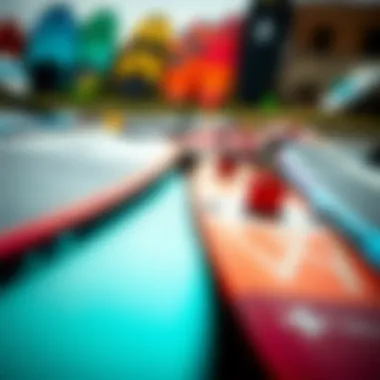

Understanding how board size correlates with the rider’s weight and skill level is the first step. A board that's too small can lead to a steep learning curve, as it may not provide the sufficient support or buoyancy a novice needs. Conversely, a board that’s too large can feel unwieldy and cumbersome. Getting this balance just right can pave a smoother path into the sport.
Another area to consider is the conditions in which you plan to ride. Lighter riders may find shorter, wider boards easier to control, especially on choppy waters, while heavier riders might benefit from longer, narrower boards which can cut through waves more efficiently.
"Board size really can make or break your initial experiences on the water. Go for comfort and control, not just aesthetics!"
In summary, selecting the proper foil board size involves evaluating your weight, riding conditions, and your aspiring skills. For serious learners, investing time in this decision reflects positively on the entire kiteboarding journey.
Weight Considerations
When it comes to selecting a foil board, weight considerations are fundamental. The size of the board should correlate with the rider's body weight to ensure optimal buoyancy. Generally, heavier riders require larger boards with more volume, while lighter individuals can opt for smaller, less buoyant options. It's crucial to remember that a heavier board may offer stability but can demand more effort to lift off the water.
- Understanding the Weight-to-Size Ratio: Each foil board will recommend a weight range. Riding a board outside of this range can lead to discomfort and challenging learning experiences.
- Volume is Key: As a beginner, boards with higher volume provide the leverage needed for take-off and support, especially in varying water conditions.
- Check Recommendations: Pay attention to the manufacturer's size recommendations based on weight. They usually provide a chart or guidance that is research-backed and designed to enhance user experience.
Riding Style Preferences
Riding style also plays a pivotal role in determining the right foil board size. Foil boards come in various shapes and sizes tailored to different riding styles, whether it's freestyle, surf-foiling, or downwind.
- Freestyle: For those looking to master tricks and jumps, a shorter and wider board typically grants better control during aerial maneuvers due to its stability.
- Surf-Foiling: If you’re drawn toward wave riding, a longer board may be advantageous as it offers increased speed and maneuverability in the surf.
- Downwind and Exploring: In scenarios where the goal is to traverse longer distances, a larger board can help maintain balance and control over longer durations, easing fatigue for extended rides.
Ultimately, understanding your personal riding style now can save headaches later as you progress in the sport, ensuring your board enhances, rather than hinders, your experience.
Foiling Techniques for Beginners
When venturing into the world of kiteboarding, mastering the right foiling techniques is crucial. These skills not only enhance performance but also make the journey more enjoyable and safer, especially for those just starting out. Understanding how to find your balance on the board, how to initiate movement, and how to come to a halt paves the way for a smoother learning experience. Each technique acts as building blocks—one skill supports another, leading to progress in the sport.
Basic Stance and Positioning
The foundation of good foiling lies in the basic stance and positioning on the board. Adopting the right posture ensures that you maintain balance, which is key when riding the waves. Typically, your feet should be shoulder-width apart, with your knees slightly bent. This positioning allows for maximum stability and quick adjustment in response to the changing dynamics of the water and wind.
- Feet Properly Placed: Start with both feet flat on the foil board. Your back foot should rest slightly in front of the tail, while the front foot is positioned just behind the front straps if your board has them. This setup helps keep your center of gravity low, reducing the chance of tipping over.
- Weight Distribution Matters: Shift your weight towards your back foot as the board lifts. This adjustment helps the foil to operate efficiently, generating lift and allowing you to glide smoothly. Lean forward when you want to descend or slow down, and always adjust based on conditions.
- Look Ahead: Your body naturally follows where you look. Keep your gaze focused on the horizon rather than down at the board. This simple act aids in balance and reduces the risk of falling.
Starting and Stopping Techniques
Once you're comfortable with your stance, it’s important to understand how to start and stop effectively. These techniques are essential not just for performance but for safety, especially in crowded water spaces.
Starting Technique
To begin foiling, you need to create enough speed while coordinating your movements. Here are some steps:
- Launch with Power: As the kite catches wind, feel the pull. Gradually lean back and engage your legs to push against the board.
- Slow and Steady: Don't rush. A sudden jolt can send you tumbling. Begin by gliding low before transitioning to a full ride.
- Find Your Balance: As you gain speed, focus on maintaining equilibrium. This might feel tricky at first, but practice is key.
Stopping Technique
Knowing how to stop is equally critical. Here’s how to do it:
- Ease Off Power: Gently decrease the kite’s speed by edging away from it. Make sure not to pull too hard on the de-power strap, as that could cause you to lose control.
- Lower Your Body: Bring your knees closer to your chest while shifting your weight to the back foot. This action helps to bring the board back level, avoiding a nose dive.
- Drag Your Back Foot: If you need to, drag your back foot in the water for an additional brake. This isn’t always needed, but in crowded situations, it can help you come to a swift and controlled stop.
Incorporating these fundamental techniques into your practice sessions will set a solid groundwork for progression in your kiteboarding journey. As you become more comfortable with these skills, you’ll find that foiling not only becomes easier but vastly more enjoyable. The learning curve may seem steep initially, but with patience and perseverance, the rewards of mastering your foiling techniques are well worth the effort.
Maintenance and Care for Foil Boards
Taking care of your foil board is as essential as understanding how to ride it. Regular maintenance not only prolongs the lifespan of your equipment but also ensures optimal performance every time you hit the water. A well-cared-for foil board can make a world of difference in your kiteboarding experience, particularly for beginners who may still be finding their footing. Here’s a look into relevant practices that can keep your foil board in tip-top shape.
Cleaning After Use
Foil boards are sometimes subjected to a mix of saltwater, mud, and sand. Allowing these substances to linger can lead to corrosion and damage over time. Therefore, cleaning the board after each use is non-negotiable. Here’s how to do it:
- Rinse Thoroughly: Start with fresh water, rinsing off all salt and debris. Focus on the foil mast and any fittings, as these areas can trap sediment.
- Use a Soft Cloth: Get a non-abrasive cleaning cloth to wipe down the surface. Many people neglect this step, thinking hose blasting is enough. Improper cleaning could scratch the board surface.
- Check for Damage: While cleaning, examine the board closely for any scratches, dents, or cracks. Addressing these early can prevent bigger problems later.
- Dry Properly: After rinsing, dry your board completely. Leaving moisture trapped can foster mold or further corrosion. Keep the board in a place where air can circulate after cleaning.
To emphasize: "A clean foil board is a happy foil board."
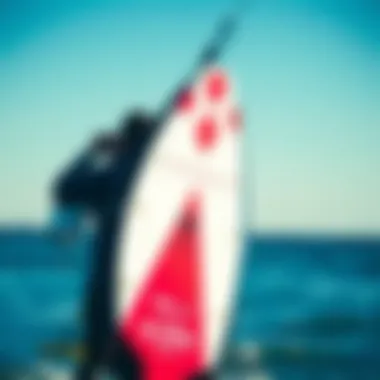
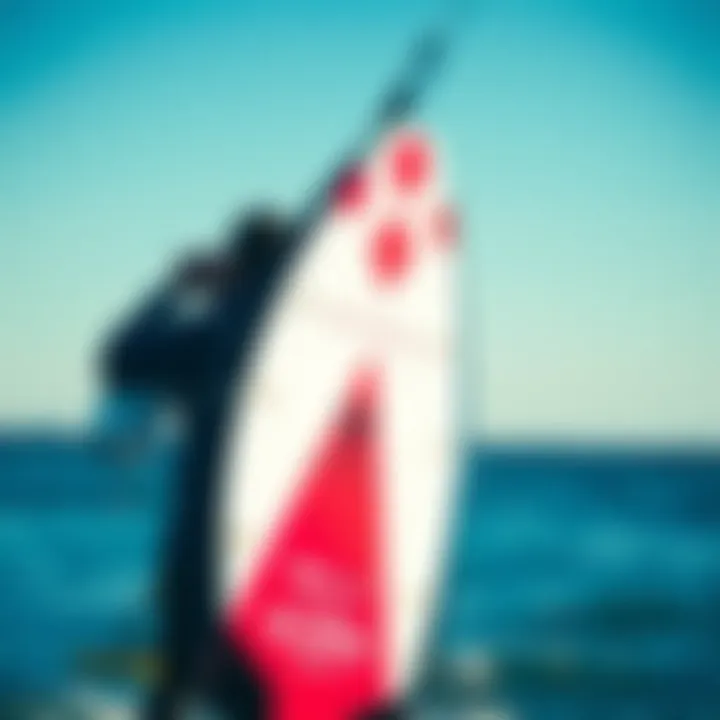
Storage Recommendations
Proper storage habits can greatly influence the longevity of your foil board. While it might seem trivial, where and how you store your board can make all the difference. Here are some pointers to consider:
- Avoid Direct Sunlight: Prolonged exposure to UV rays can degrade the materials of your board. Store it in a shaded area or invest in a protective cover.
- Temperature Regulation: Extreme temperatures—whether hot or cold—can warp your board. Aim for a climate-controlled environment for long-term storage, ideally within a range of 60-80°F (15-27°C).
- Positioning Matters: When storing your board, lay it flat or place it vertically. Avoid stacking heavy items on it, as that can lead to unwanted bends or cracks.
- Regular Checks: Every so often, check the board and components while stored. Ensure there’s no moisture build-up or pests, and give it a gentle wipe if necessary.
By taking some time to clean after each outing and storing your foil board properly, you're investing in your future sessions on the water. This meticulous attention to detail not only enhances performance but also safety, allowing you to focus on the fun aspects of kiteboarding rather than worry about your gear.
Common Mistakes to Avoid
Choosing the right foil board is a crucial step for beginners wanting to reach new heights in kiteboarding. However, even with the best intentions, novices often trip themselves up by overlooking key aspects of gear and their own capabilities. This section pinpoints common pitfalls that can hinder progress on the water, aiming to equip you with the knowledge to sidestep these errors. Awareness of such mistakes not only boosts confidence but ensures a smoother learning journey.
Ignoring Gear Properly
One of the most common blunders among beginners is ignoring proper gear usage. When one sets out to learn kiteboarding, it’s easy to get caught up in the excitement of the sport, focusing solely on the thrill of riding the waves. But gear plays a fundamental role in your overall experience and safety.
Proper gear management involves more than just selecting a foil board that looks good. Consider the following:
- Understanding the Components: Familiarize yourself with the different parts of your foil board. Each element, from the board to the hydrofoil wing, contributes to your performance.
- Safety Checks: Before each session, perform a thorough check. Look for signs of wear or damage, especially on the foil and connections. Ignoring this could lead to accidents.
- Following Instructions: Don’t skimp on reading the manuals or watching instructional videos. Every bit of guidance is a step towards mastering your board and enhancing your skills. Ignoring these resources can quickly lead to confusion or injury.
It's not just about the ride but about respecting the gear that supports it.
Overestimating Skill Level
Another common misstep is overestimating skill level. Many beginners dive into the sport thinking they can pick it up quickly or that they can handle advanced maneuvers right off the bat. This mindset can lead to frustration and accidents, setting back your progress significantly.
Recognizing your current capabilities is key to a rewarding experience. Here’s what to keep in mind:
- Pacing Yourself: Skills build over time. Embrace the learning curve; it’s okay to start slow. Rushing to perform tricks before you're ready only increases the risk of injury.
- Listening to Your Body: Pay attention to how you feel on the water. If you’re fatigued or struggling to control the board, it might be best to take a step back and focus on fundamentals.
- Seeking Instruction: Consider guidance from experienced instructors. They can offer valuable feedback and help you progress without unnecessary risks. Learning from their experience is far more beneficial than a trial-and-error approach.
Ultimately, grounding yourself in realistic expectations helps foster not only safety but also enjoyment of kiteboarding. Putting in the time to develop your skills pays off in the long run.
Community and Resources
The world of kiteboarding is not just about riding the waves; it’s also about connecting with others who share the same passion. Having a supportive community is essential for beginners, as it can dramatically enhance your learning experience. When you surround yourself with seasoned kiteboarders, you gain access to invaluable insights, tips, and encouragement that can make all the difference as you navigate the sometimes challenging waters of this sport.
Where to Find Support
Finding support as a beginner kiteboarder can seem daunting, but thankfully there are numerous channels available. Here are some tried and true places to explore:
- Local Kiteboarding Schools: Many towns near coastlines or lakes have kiteboarding schools offering classes. Instructors can provide guidance, equipment, and even a safe environment to practice your skills.
- Kiteboarding Shops: Local shops are hubs of knowledge. Budding kiteboarders can ask questions, find gear recommendations, and may even hear about local meetups or events.
- Events and Competitions: Attending kiteboarding events or competitions is a brilliant way to meet others in the community. You'll meet folks from all skill levels and can hear firsthand what works for them.
- Social Media: Platforms like Instagram and Facebook are filled with kiteboarding groups where members share their experiences, gear tips, and organize group outings. Joining a few of these groups can help keep you motivated.
Online Forums and Groups for Beginners
The digital age has ushered in a wealth of knowledge at our fingertips. Several online forums and groups constitute the backbone of the kiteboarding community online. Here’s a look at some popular ones:
- Reddit: Subreddits such as r/kiteboarding are bustling with discussions. New riders often pose questions about equipment or techniques, and the seasoned members are more than willing to share tips and insights.
- Kiteforum: A comprehensive forum where you can find endless threads dedicated to gear, locations, and advice from seasoned professionals. The community is both welcoming and helpful, especially to novices.
- Facebook Groups: Groups like "Kiteboarding for Beginners" focus specifically on novice experiences. They’re places where you can comfortably ask basic questions without fear of being judged.
- YouTube Channels: Numerous channels offer tutorials, gear reviews, and personal experiences. Visual learning can be incredibly beneficial when grasping new techniques.
The combined resources of local support and online communities equip new kiteboarders with the confidence and wisdom they need to succeed in their kiteboarding journey.
Connecting with people who share the same interest can greatly enhance your kiteboarding experience. They can level the playing field, allowing you to learn faster and avoid common pitfalls. As you immerse yourself into the community, remember that it’s not just about the sport; it’s about building connections that often last beyond the water.
Culmination
Selecting the right foil board can significantly affect your experience as a beginner in kiteboarding. A good board not only enhances your stability and balance but also makes learning the techniques vital for mastering the sport. Beginners often underestimate the impact of the right choice, leading to unnecessary frustration and injury. An optimal board allows for smoother rides, which in turn builds confidence and encourages more time on the water.
Recap of Key Points
To summarize, the journey to finding the right foil board for a novice involves a few crucial considerations:
- Stability and Balance: An ideal beginner foil board should provide ample stability to cultivate confidence. Look for wider boards that help keep you upright and steady.
- Weight and Size: Understanding your body weight and size helps in determining the right specifications for your foil board. This impacts the buoyancy and overall performance while riding.
- Material: Opt for durable yet lightweight materials that contribute to ease of handling, especially when you're learning the ropes. Boards made from foam or composites are traditionally favorable for beginners.
- Community Support: Getting advice from fellow riders and online communities can provide insights that might not be found in articles. Engaging with groups on platforms like Reddit or Facebook often leads to personal recommendations.
These elements will help guide your purchase and ensure you're equipped with a board that matches your skill level and riding style. You'll discover that each aspect feeds into the others, enhancing your learning experience by creating a more enjoyable ride.
Encouragement for New Riders
For those just stepping into the world of kiteboarding, know that every expert was once a beginner. Embrace the learning curve, and don't rush the process. Practice consistently, and you'll surely see improvements. Remember, patience and persistence pay off. Join local kiteboarding clubs or online forums; this not only helps in learning but also makes the endeavor fun as you connect with others who share the same passion.
Equipped with the right knowledge and tools, the water will be your playground in no time. So, gear up, stay safe, and let the adventure unfold! A world of excitement, challenges, and skills awaits you in kiteboarding.















